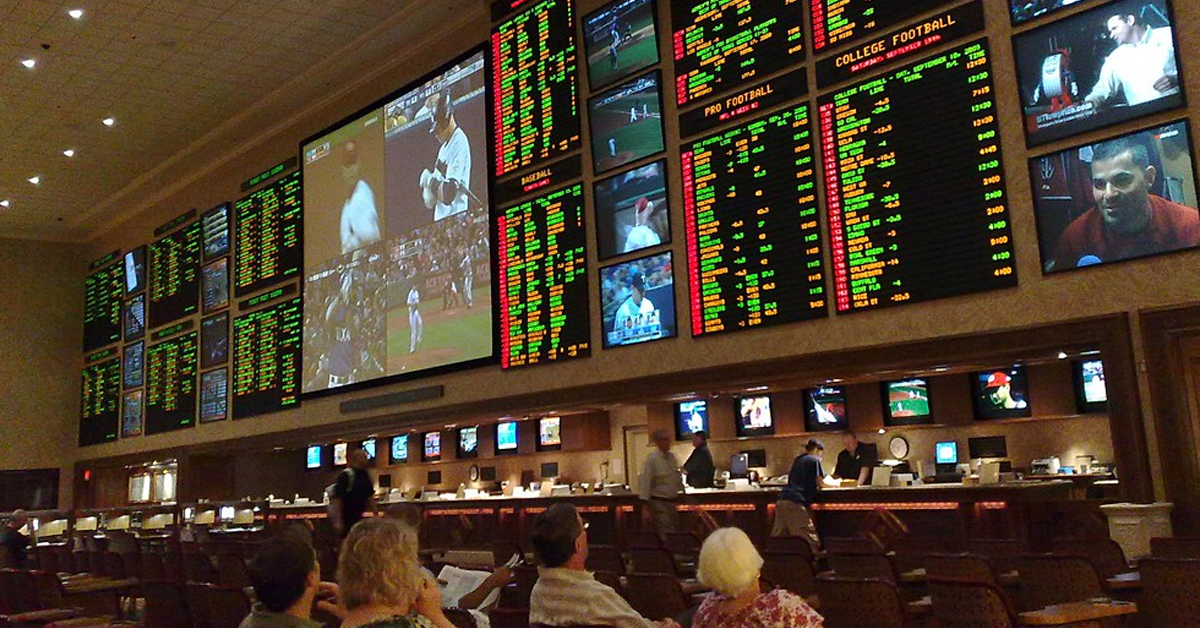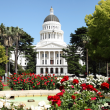Where have you gone, Jim Wasserman? My alma mater sure could use you these days.
Fresno State is gearing up for a big election to be held March 20-22. Students will elect next year’s student government – executive and legislative branches.
The ballot includes a referendum: Yes or no to a modest hike in student fees, effective in four years, to help fund construction of a new student union?
This is the university’s second crack at the project. Students in March 2017 rejected a proposed $80 million facility by a vote of 1,846 to 1,217.
Last year’s campaign was called “Bold New U.” This year’s campaign is called “New Student Union.” The building this time is a bit smaller and lower in price.
We’ll soon get to how Wasserman, my newsroom colleague at The Bee for many years, fits into this story.
I’m not a student, but I definitely support the proposal. I know what it’s like as a Fresno State student (long ago) and a father of three Fresno State students (now graduates and gainfully employed) to help foot the bill for a college education. My wife and I managed. Future Fresno State students will, too.
Here are a few key points to the university’s proposed project:
· The New Student Union will be about 80,000 square feet and cost an estimated $60 million.
· The new fee starts at $149 per semester. The fee will not go live until 2022-23 at the earliest, when the building is expected to be finished. The fee, once it goes into effect, will have automatic cost of living adjustments.
· University fundraising will supplement the cost of construction.
· The current student union was built 50 years ago, when Fresno State College had 10,000 students. The current student union is simply too small.
· The multi-level New Student Union will have plenty of meeting rooms, places to buy a meal and spots to study (or take a quick nap).
Go to newstudentunion.com for more information.
I recently sent an email to Blake Zante, president of Associated Students, Inc., or ASI. Zante is Fresno State’s student body president. I asked for his thoughts on the referendum.
Here is Zante’s reply (the parenthetical comments are his): “In terms of the funding for the New Student Union project, the only way that it can happen is by a student referendum to increase student fees. There are two types of fees that students pay: tuition (state money that goes towards classrooms, academic programs, faculty, etc.) and student fees (The Collegian, ASI, USU, student programs, etc.). Tuition (state funding) cannot be used towards the building. While opponents say they would like to see funds used elsewhere, it is not an ‘either/or’ deal. President Castro has pledged $26 million in classroom renovations in the next two years. Therefore, student fees must be used to go towards the building because it is used solely for student activities.
“The New Student Union project will impact campus geography significantly. I believe supporters do acknowledge the impact it will have. With a New Student Union on campus, it would not only provide upgraded spaces on campus, but also increase the amount of spaces for clubs and organizations to use. Currently, our USU has 7 rooms for more than 300 clubs and organizations at Fresno State. Not only this, but it would create an entire new environment for students at Fresno State. The university would be one step closer to having student facilities that are on par with top universities around the country.
“Our current student union was built nearly 50 years ago for 10,000 students. We now have 25,000+ students. It is time for a New USU.”
“USU” is University Student Union.
Opponents last year said any new fee should go to the modernization of classrooms. Opponents this year are saying the same thing. Zante gives a concise explanation of the restrictions on categorical funds in a governmental institution.
Opponents also make two points familiar to any government reporter: 1.) We don’t like higher taxes; 2.) We don’t like imposing a financial burden on future generations.
William Ramirez, a reporter for The Collegian, Fresno State’s student-run news platform, wrote last week an excellent article on the referendum. Ramirez interviewed Monique Touchstone, who is heading an anti-new student union campaign for Fresno State’s chapter of Young Democratic Socialists.
“We advocate for affordable higher education,” Touchstone told Ramirez, “so we feel a fee for anything like this is really just going against our actual goal, which is, eventually, tuition-free public universities.”
The world these days must be producing a different sort of “young democratic socialist” than when I started college a half-century ago.
Fresno State says the new fee would be added to the “Cost of Attendance” formula that determines whether a student is eligible for financial assistance. Four out of every five Fresno State students currently receives financial aid.
I take all this to mean Touchstone and her fellow democratic socialists are going to the ramparts to ensure that the richest 20% of Fresno State students and their families get to avoid paying an additional tax that would go toward helping the masses (who would have paid the tax not out of their own pockets but through government entitlements funded by taxes on the richest 20%).
On top of that, student activists back in my day were fond of the “bad is good, terrible is better” method of spurring social change. In other words, generate a crisis that can be fixed only by massive government intervention.
Seems to me a modern day Tom Hayden would jump at the chance to add another tax to the bill of the poorest students, knowing full well that government transfer payments would fully fund the tax, then take that lengthened tax bill to Sacramento and shout, “Free college for all!”
Young Democratic Socialists of 2018 apparently will never be confused with Students for a Democratic Society of 1968.
Returning to President Zante’s email, please note this sentence: “The New Student Union project will impact campus geography significantly.”
I had asked Zante whether New Student Union supporters are trumpeting the impact the building could have on Fresno State’s open space, and the impact that open space can have on the students’ experience at Fresno State. I had suggested that perhaps supporters were focusing too much on purely utilitarian arguments involving the inside of the building.
Here’s where I bring in Jim Wasserman.
Wasserman for many years was a Bee columnist. He was fearless and perpetually curious. He made plenty of enemies. But he was right far more often than he was wrong, which is how he kept the gig for so long.
One of Wasserman’s recurring columns revolved around Fresno’s architecture and how it fit into the landscape. Wasserman would hop in his car. He would pick up his buddy. His buddy, if I recall correctly, was a professional architect. The buddy might have been a Fresno State professor, as well.
Jim and the expert would drive around town. They would observe and talk. Jim then wrote his column. The result always was a memorable (and sometimes brutally frank) lesson on how architecture and its relation to space can influence, for better or worse, a community’s soul.
Fresno State prides itself on being a community. But Fresno State has no town square. Or civic square. Or town commons. Or village green. It has no identifiable center or geographical heart where University events of every stripe can take the community’s center stage.
Kathy Madden, writing in 2002 for the Project for Public Spaces, makes my case: “From the town greens of New England to the plazas of the Southwest, the U.S. has a great history of civic squares, but for decades this rich heritage has gone to waste. Poorly maintained, underused, and overrun by automobiles, our squares have been stripped of their rightful purpose: to sustain the economic and social vitality of cities. They are no longer places where one can have the regular, random encounters that foster the kind of social contact Jane Jacobs called ‘the small change from which a city’s wealth of public life may grow.’
“Fortunately, there are ample signs that civic squares are on the verge of a remarkable resurgence. Many projects are coming about now because public officials, planners and citizens are starting to understand that public life – meaning active, vital street life – is essential to rebuilding downtowns.”
Fresno State has many wonderful “neighborhoods” featuring unique architecture and open space. For example, I love to walk north-to-south at night through the middle of the remodeled Quad and come upon the Madden Library with all the lights going full bore. The jaunt never fails to inspire me.
But where is the center of campus? Near as I can tell, it’s the walkway between the current Student Union and the 60-year-old building that houses Taco Bell and The Bucket. The distance from the Taco Bell entrance on one side of the walkway to the Fresno State women’s rugby club’s informational booth on the other side is about 30 feet – I stepped it off on Monday. That space is the essence of Fresno State’s “town commons” linking the Peace Garden to the west and the Memorial Fountain to the east.
That’s not a civic square worthy of Fresno State.
Many architectural details about the New Student Union project, should it survive next week’s referendum, remain to be fleshed out. But there’s no doubt that University officials currently plan to build in an area south of the 50-year-old student union.
Seems to me the removal of the Taco Bell/Bucket building and construction of the New Student Union would give the administration of Fresno State President Dr. Joseph Castro the perfect opportunity to create a beautiful and effective civic square for this majestic campus.
Unfortunately, I get no sense that Fresno State students care much about campus architecture, open spaces and civic squares.
I’m not saying a column from Jim Wasserman would convince Fresno State students to support next week’s referendum.
I am saying Jim could teach Fresno State students a thing or two about beauty, culture and the duty when the opportunity arises to leave an enduring legacy.
That opportunity for Fresno State’s current student body arrives March 20-22.








